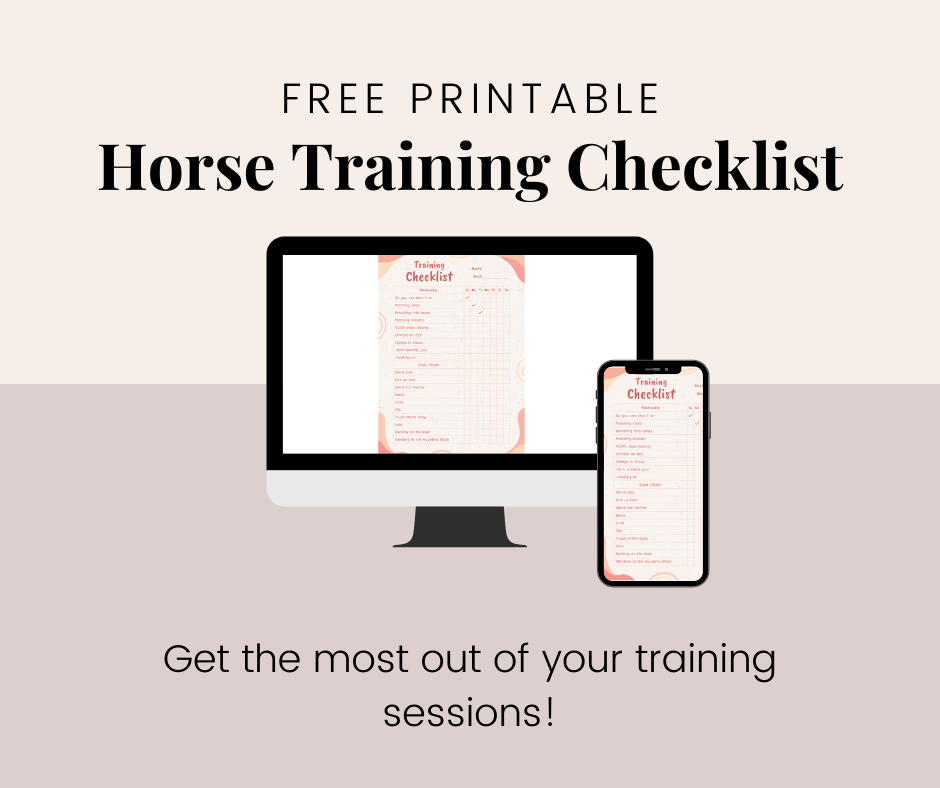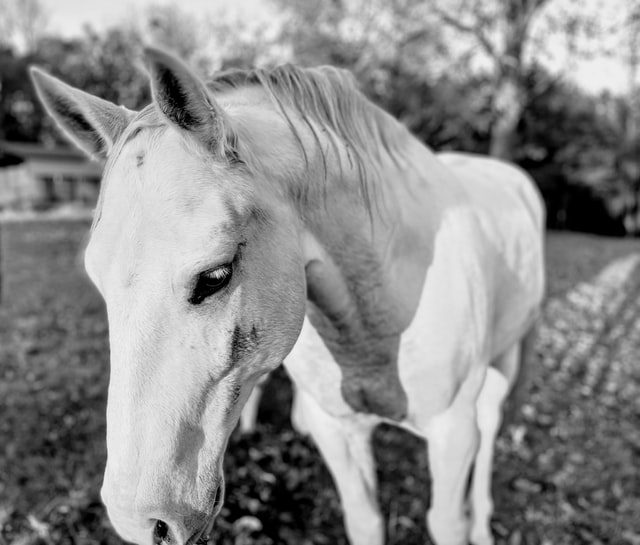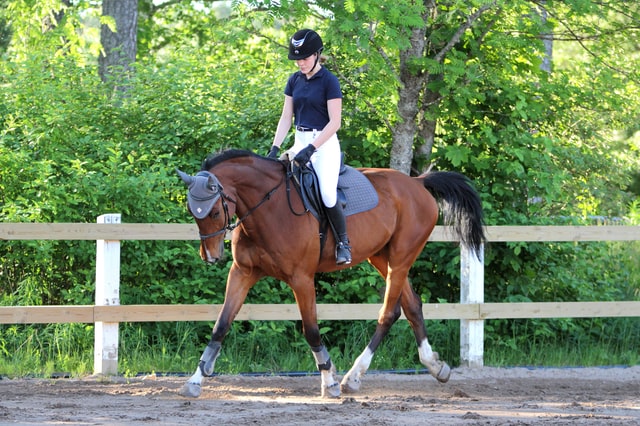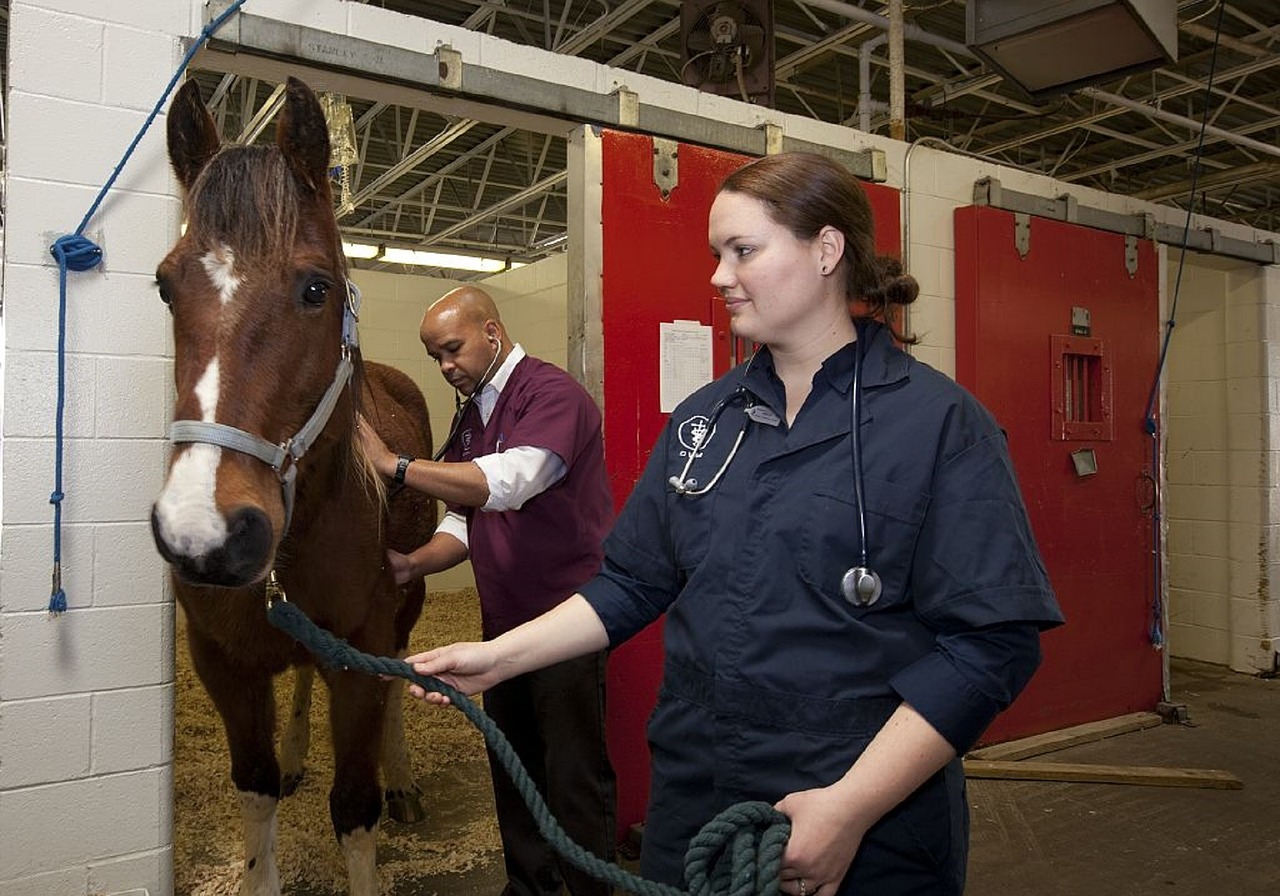How Much Does a Horse Cost?
One of the most common questions we get from our students is, “how much does a horse cost?”
In this post, we break down exactly what to expect, how to budget for a horse of your own, and how to create emergency funds.

Young equine enthusiasts want their own horse.
One they can bond with, train with, grow with, show with.
But they’re afraid of unexpected costs, or are simply afraid they can’t afford it.
But my fear is that good horse owners are scared away and for that reason good horses go homeless.
So in this post I want to break down the nitty gritty details and hopefully help answer the question of how much the average cost to own a horse is.
How Much Does a Horse Cost?
The purchase price of a horse is often the least expensive part of owning a horse.
If you’re looking at buying your first horse the monthly costs are the most important factors in horse ownership.
The average horse can live 25-30 years.
That’s 25-30 years of board, feed, vet bills and equipment and additional cost. Even for a free horse.
The monthly cost of horse ownership will far surpass the purchase price.
Here’s what to expect when it comes to owning a horse:
Board
Boarding is a term used when an owner of a horse has to keep a horse at someone else’s farm.
To get a good idea of what you’ll pay in board, first identify what type of board situation you would like.
The four common types of board are:
- Full Board: includes all the necessities your horse will need – stall with full turn-out. Sometimes this includes feed, training, etc. that will be outlined in your contract. This is the best option if you have a busy schedule and won’t be able to go visit your horse every day.
- Pasture Board: your horse will be turned out 24-7 with feed, water, and some sort of shelter. If you live in a colder climate, your horse may need blankets taken on and off at an extra expense.
- Self-Care Board: your horse has access to the facilities, and you do the rest. You’re responsible for your own feed and feeding, bedding and mucking, etc. This can be very economical, but difficult if you get sick or want to go out of town.
- Co-Op Board: similar to the above scenario, a co-op board situation is where multiple boarders band together to take turns doing tasks such as turn out/in, mucking and feeding.
Once you’ve identified the type of board that best suits your situation, do some shopping.
Check out Facebook, Craigslist, newspapers, etc. to see what the average price is in your area.
The higher price may not always mean a better boarding barn.
Then go to your top three choices for a local stable and take a look around.
You may like the facility, but not the people.
You may like the people but not the facility.
Make sure that you find a good fit for all aspects of you and your horse’s needs.
Also make sure your top three choices have availability.
Great boarding barns usually have a wait list.
If you have your own property you may save some money in the long run but you will always have annual cost to maintain the proper care of your horse.
Things such as feed, water, maintenance on fencing and buildings, vet bills, dental care and farrier bills are all unavoidable.
Also, if you’re keeping horses on your own land you need a bare minimum 2-3 acres per horse, depending on the number of horses you plan on keeping.
Whether you keep your horse at home or at a boarding facility, be sure to keep an eye out for these 10 plants that are toxic to horses.
Farrier
Horse’s hooves grow continuously and our modern method of horse care and soft pastures mean that they will need regular trimming and/or shoes from a certified professional.
Unfortunately, the type of shoes and frequency of farrier service depends on the individual horse and the environment.
However, you can budget to have your farrier come every four to six weeks, regardless of if they’re shod or not.
The best way to get an idea of how much your horse’s hoof care will cost is to call a number of local farriers and ask them.
Often they will offer a discount if they will trim multiple horses in one visit, so organize with your other boarders (if you’re boarding) to schedule on the same day.
If your horse goes barefoot, a lot of farriers will work with you and teach you how to do basic trim maintenance to stretch out the time between visits – but talk to your farrier about this first.
Hoof care in horses is critical.
The saying “no hoof, no horse” has survived centuries for a reason.
Finding a well-qualified farrier is often times difficult, so when you find a good one, take care of the relationship.
Vet Bills
At a very minimum, you can expect your vet to come out once a year to float your horse’s teeth and give annual vaccinations.
Horses’ teeth grow continuously, and the modern diet we feed them of soft grasses and grains isn’t enough to evenly wear down their teeth.
This means they’ll often develop sharp points or unevenness in their teeth that you vet should file down.
Just like dogs and cats, your horse will get a few “core” vaccinations every year.
Without going into too much detail, your vet will likely recommend administering vaccines for Eastern Equine Encephalitis (EEE), Western Equine Encephalitis (WEE), and Tetanus.
These are all administered in one vaccine, and is relatively inexpensive.
Tetanus is also highly recommended as horses are prone to cuts.
Depending on your area, your vet may also recommend a vaccine against West Nile Virus.
For horses in the mid-Atlantic states, a Potomac Horse Fever vaccination is recommended.
Finally, two other common vaccines include Rabies and Lyme Disease.
Typically, a balance between horse exposure based on regional location and the environment your horse will be kept is best.
There are additional vaccine requirements that will need to be considered if you board your horse or plan to show depending on exposure potential and state and local requirements (e. g. Strangles).
Your vet will help you tailor your vaccinations based on your location and any recent disease activity and your exposure risk.
In addition to vaccines we recommend having your vet take a fecal exam at least once a year.
Traditionally it would routine to deworm our horses every 6-8 weeks while rotating the class of drug we were using.
However most of the parasites we were trying to prevent are now resistant to the dewormers on the market, so running a fecal exam will help you know IF you need to deworm, and if you do, with what.
Most vets will charge a basic “farm call” price (generally between $60-$100), and then additional amounts per services performed.
While some years your vet will only have to come out once, other years, it seems, they’ll be out every few weeks.
Horses are Murphy’s Law on four legs, and there’s nothing worse than being afraid to call the vet due to cost constraints.
We recommend having an emergency fund of at least $500 to help cover those unexpected large animals vet calls.
Other owners we know maintain a zero balance on a specific credit card put aside just for vet emergencies.
A lot of vets will work with owners and try to avoid the farm call costs by reviewing a texted photo or will work out payment plans or accept credit cards.
However, we’ve seen too many instances of an owner being caught off-guard by cost and either 1. not pay their vet, or 2. get rid of the horse before getting it treated.
Neither one is a good situation for anyone involved. It’s far better to be prepared.
Another way to be prepared is to decide for yourself and talk with your family about the amount you’re willing to pay to treat an injury, and where you draw the line.
This can be a hard, emotionally difficult conversation to have, and is better discussed before you have to make a difficult decision.
To be prepared for emergencies, make sure to have these 20 essential equine first aid items already in your kit.
Equine Medical Insurance
Why insure a horse?
Whether it be loss of use, major medical, theft, or mortality – equine medical insurance is never a bad idea.
Most companies offer custom packages tailored to best suit you and your equine friend.
This being said, insurance is expensive (with an annual fee ranging roughly from 10-20% of your animal’s appraised value, not including monthly premiums and deductibles), and for many “backyard” (pleasure type, family horses) this may not be practical/necessary.
If, however, you are spending a significant sum on your new horse – a sum you really can’t afford to replace – speaking to an equine insurance agent would be worth your while.
A middle ground between no insurance and full coverage is “colic” insurance.
Since colic is a frequent and common ailment in our equine partners, several companies offer “colic coverage”, which is not as expensive.
There are typically qualifying requirements to minimize the risk of your horse suffering an acute case that you must meet in coordination with your vet, but once confirmed, the carrier will cover a hefty portion of the colic surgery, should your horse need it.
Feed
Your feed bill will be the most difficult part to anticipate.
It will change based on the time of year, the type of horse you have, their age, the health of their teeth, and their housing scenario.
The most expensive scenario is that your horse will be in a stall all day, every day.
This means that you will be buying a feeding them every ounce of nutrition that they need. (We go more into equine nutrition below).
The foundation – and in some cases 100% – of your horse’s diet should be roughage (hay, grasses, etc.).
If you’re unsure of how your horse was fed previously, begin giving them only roughage and keep a close eye on their body weight.
Keep in mind, however, that early Spring grass contains more sugar and gradually converts to starch as the summer moves on.
Horses that are prone to metabolic disease may need to be kept in a stall during early Spring, or at least muzzled to limit their intake of sugars.
Even store-bought hay has varying degrees of sugar content.
“First cutting” hay will have more sugar content than second- or third-cuttings.
The best advice we can give you is to ask around.
Ask the horse’s previous owner how they are fed – how much hay/grass and how much grain.
Ask other local horse-people how they feed their horses, and about how much it costs them on a monthly basis.
While they won’t be able to give you an exact number, they’ll be able to give you enough of an estimate to work off of.
Older horses will be more difficult to feed and the hay costs depend on a number of factors.
The price of hay will increase when there have been bad growing seasons, so always budget 10% more than expected to cover any increases.
These are the major categories you’ll need to budget for before you buy your next equine companion.
Other variables include trailering, tack, equipment such as brushes and combs, but most of these will last a lifetime if they’re taken care of well – or you’ll buy a never-ending supply of like fly spray and bits (I’m a guilty bit-hoarder).
If we’ve missed anything, we’ll always come back and update this post.
If you found this post useful, please feel free to pin it or email it to someone you know looking to buy a horse!
Sharing is caring!




One Comment
Comments are closed.